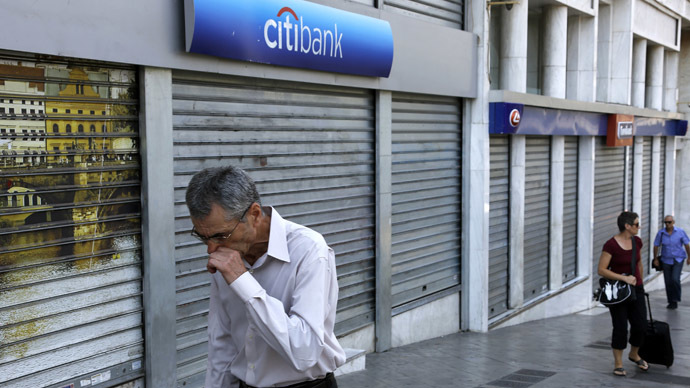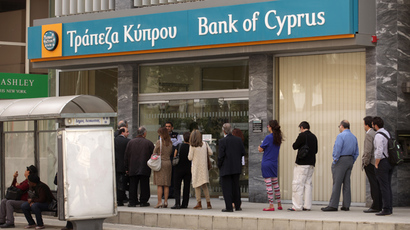EU branching out: 20,000 bank outlets closed in EU since start of downturn

Banks in Europe have cut 5,500 branches in 2012, bringing the total number of outlets closed since the beginning of the credit crunch in 2008 to 20,000. To cut costs financial institutions are shrinking their bricks-and-mortar presence and going digital.
There is now one banking branch for every 2,300 people in the EU,
8 percent down from four years ago, according to European Central
Bank statistical data, processed by Reuters. And though 8 percent
might seem not such a big figure, it means some of residents,
namely those in the peripheral regions, no longer have easy
access to banking services.
The Spanish financial industry is one of the EU leaders in
economizing by cutting bank outlets. Almost a fifth of branches
there disappeared since 2008. A Spanish lender Bankia as a result
had to introduce a mobile service – a bus carrying banking
equipment to remote areas.
"In Spain, the economic problems have been a catalyst. Perhaps
without that things could have carried on the way they were for a
little longer," says a Madrid-based Barclays banker.
The biggest reductions in banking sphere in 2012 were seen in
crisis-hit Greece with 5.7 percent or 219 of its branches closed.
France is an example of the opposite. It banks are very reluctant
to contract their networks, having the most branches in Europe –
38,450 - by the end of 2012, with their physical presence having
only shrunk by less than 3 percent since 2008.
"When you close a branch, you run the danger of losing at
least a few clients," says Fabrice Asvazadourian, global
co-head of financial services at consultant Roland Berger.
"It's the moment that gives people an excuse to consider
switching banks."
But the general trend for diminishing the number of bank outlets
remains, as maintaining them accounts for 60 percent of retail
banking costs, according to Deutsche Bank analysis.
Internet banking is one of the rapidly developing low-cost
options. But it could take a new generation to see it used to
full potential. So far, online banking can hardly be a full-scale
substitute for the closed outlets. Those are mostly in remote
areas with either crippled internet access or residents not being
skilled enough in using the latest technology.














